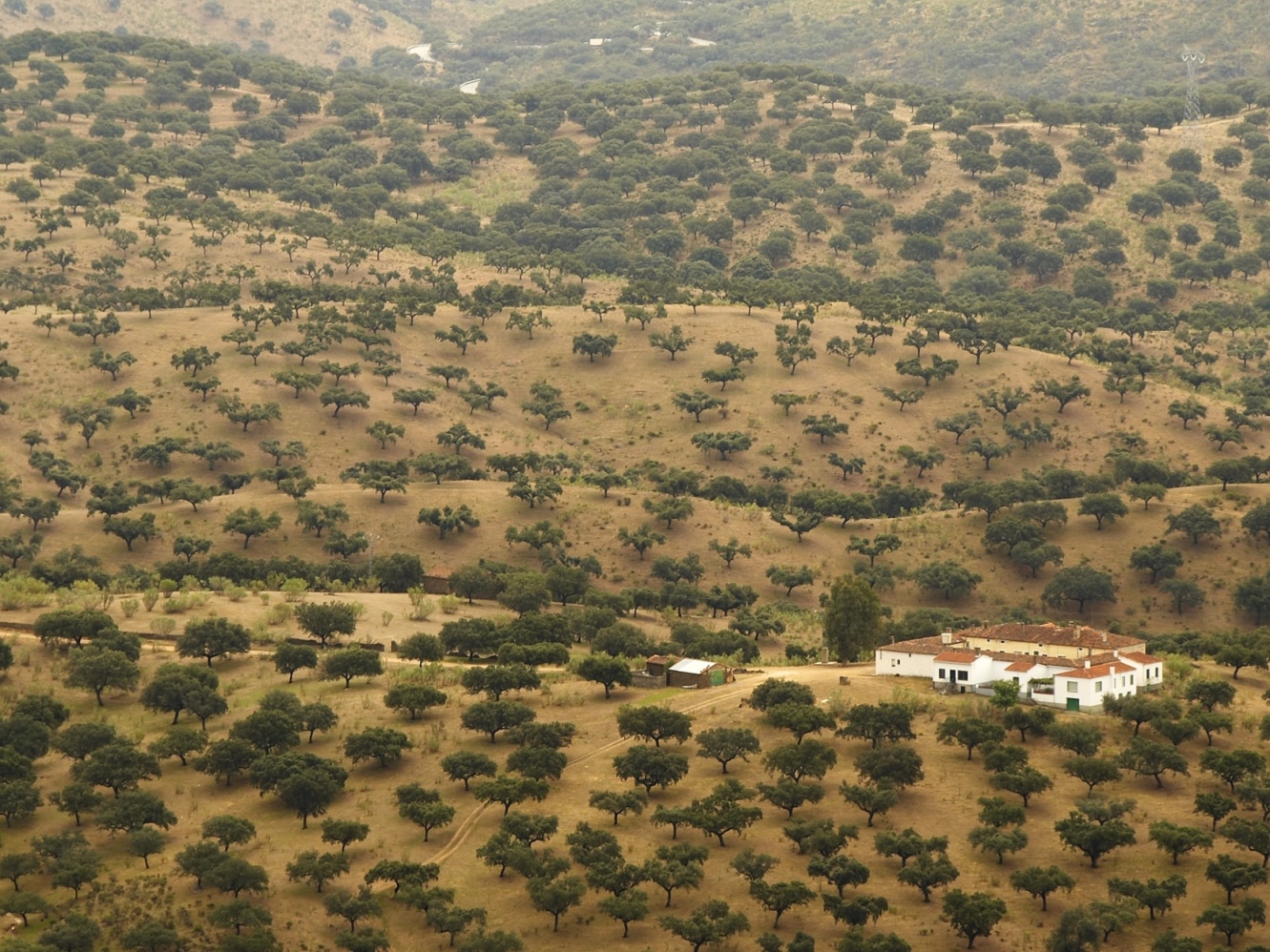 Good Practice: The multi-sector and multi-level participation process used to the design Spain’s rural environmental policies led to a high degree of consensus of the final programme. It has not been challenged nor questioned at any level.
Good Practice: The multi-sector and multi-level participation process used to the design Spain’s rural environmental policies led to a high degree of consensus of the final programme. It has not been challenged nor questioned at any level.
Type: Governmental (Ministry of Agriculture, Food and Environment)
Working language(s): Spanish
Start: 2008
Duration: 1 year 9 months
Target group(s): 10,596,958 inhabitants of the rural areas were included in the Programme (22.96 percent of Spain’s population)
Budget and funding sources: Ministry’s budget
Partner organizations involved:
- National rural development networks: REDER, REDR.
- Environmental organisations: WWF/ADENA, SEO/Birdlife, Ecologistas en Acción, Federación de Amigos de la Tierra, Greenpeace, Fundación Nueva Cultura del Agua.
- Social organisations (trade unions, women, handicapped): CERES, AMFAR, FADEMUR, CERMI.
- Business and Employer’s Organisations, Agricultural Organisations, Trade Unions: CEOE, UGT, CCOO, ASAJA, COAG, UPA, SEAE, CCAE, FEPEX, FIAB, Spanish Federation of Irrigation Communities, Spanish Federation of Fishermen’s Guilds.
- Ministerial Departments: all Ministries with the exception of the Ministry of Defense. Spanish Observatory of Sustainability.
- Autonomous Communities: all 17 Autonomous Communities, through their Departments of rural development, agriculture, natural heritage, quality and environmental assessment, cultural heritage, land use planning, etc.
- Local entities: Spanish Federation of Municipalities and Provinces (FEMP)
Stakeholders involved: All the above-mentioned organizations were represented in the Bureau of Associations of Rural Development, the Rural Environment Council, the Inter-Ministerial Commission for the Rural Environment or the National Rural Network Monitoring Committee. Formal channels were, thus, opened for information sharing and dialogue among all groups. The involvement of the different stakeholders can be summarized as follows:
- Ministerial Departments: all Ministries participated in the design of rural environment policies through their representatives at the Inter-ministerial Commission for the Rural Environment. There were 16 Ministries at the moment when the Programme was passed (4 June 2010) and 9 of them incorporated their own actions (multi-sector action programme).
- Autonomous Communities: all of them participated in the design of the Programme. They proposed and qualified the rural areas where the Programme can be implemented in their respective territories. They helped in the definition of the content of the Programme, particularly in the definition of eligible actions (in Spain, most of the execution competences with an impact on rural environment are transferred from the State to the Autonomous Communities) and in the future they are called to lead the design of each Rural Area Plan (Area Plans are the second planning stage of the Programme) The Programme is implemented in each Autonomous Community through a collaboration agreement between General Administration of the State and the Autonomous Community.
- Local entities: the third level of public administrations with competences on rural environment, particularly relevant in terms of provision of proximity and basic services for residents in rural areas. Local entities work together with Autonomous Communities in the design of each Area Plan and execute some of its actions.
- Economic and trade union organisations: representing the production and economic aspects of the Programme, directly related to employment.
- Social organisations: representing of the interests of certain groups with special needs in rural areas that have been prioritized by the Programme: women and disabled.
- Environmental organisations: defending the environmental aspects of the Programme.
- National rural development networks: binders of Local Action Groups from PRODER and LEADER initiatives.
Combine economic and social (and sometimes environmental) agents with local authorities in each territory, and are important players in structuring and revitalization of rural areas.
MAIN OBJECTIVES OF THE INITIATIVE
The Sustainable Rural Development Programme undertook multi-sector and multi-level actions, previously planned and adapted to the needs and characteristics of each rural Spanish territory, with the aim of making progress in terms of sustainability in every rural area. Intent was to make mid and long term strategic interventions, and to coherently strengthen the economic, social and environmental pillars of each rural area.
The Programme was designed to complement the rural development instruments relating to the measures accompanying the common agricultural policy (FEADER) and other existing programs or courses of action on rural environment promoted by different governments.
METHODOLOGY
Firstly, three Institutional Bodies were created for cooperation, information, coordination and participation, as established in Law 45/2007 on sustainable development of rural environment.
- Inter-Ministerial Commission for the Rural Environment: coordination forum for Ministerial Departments holding competence on rural environment (3 meetings in the period 2008-2010). Given its high level of representation (Sub- secretariat), a working group was established to deal with technical issues. (3 meetings, 2008-2010);
- Rural Environment Council: cooperation and coordination body. The Council coordinates the 3 administration levels: State, Autonomous Communities and Local entities (4 meetings, 2008-2010). To move forward in the technical preparation of the issues addressed in the Council and improve the level of coordination with the Autonomous Communities, a working group was also established (8 meetings, 2008-2010);
- Bureau of Associations of Rural Development: information and participation forum of economic, social and environmental NGO’s. (4 meetings, 2008-2010).
To assist in identifying priorities and actions to be included in the program, before the elaboration of a draft text, and with the only support of conceptual schemes arising from previous meetings, a workshop day was organized with the involvement of economic, social and environmental agents represented both at the Bureau of Associations of Rural Development and the National Rural Network Monitoring Committee. The meeting offered new ideas that helped to substantially expand and improve these conceptual schemes.
In parallel, more than 40 bilateral and multilateral meetings were held, with the attendance and participation of representatives of the involved Ministries, the involved Departments of Autonomous Communities and the local entities.
Based on the outcomes of the above-mentioned meetings and other informal contacts, together with the previous technical works of the General Sub-Directorate of Rural Planning, a preliminary Programme was drafted. Also, in the context of the compulsory environmental assessment, an Environmental Sustainability Report (ISA) was concluded.
Both documents were submitted to public information and consultation processes and uploaded to the Ministry’s Web (Public participation section). Public announcement of the opening of the Public Information period of 45 days was published in the Official Gazette of 15 October 2009 and in two national newspapers. A joint presentation of the Programme by the Ministry and the Autonomous Communities was made in Madrid for all groups previously identified as “interested public” participating in the process. At a local level, joint presentations for the media were made in the territory of six Autonomous Communities.
As a result of the public information and consultation processes, a total number of 689 allegations and suggestions were received. A large number of allegations (617) referred to the demarcation of the different rural areas made by the Autonomous Communities. The Ministry sent these allegations to the Autonomous Communities for consideration before giving a reasoned response. Only 72 allegations referred to other contents of the Programme. There were 44 allegations totally or partially related to environmental issues that were considered by the Ministry itself as the promoter of the environmental assessment of the Programme.
To arrange the final details, additional meetings with rural development networks, agricultural producers’ organizations, cooperatives, trade unions, environmental NGOs and the Spanish Federation of Municipalities and Provinces were held.
As a conclusion to this long design process, the text of the Programme was favourably reported, unanimously, by the Inter- Ministerial Commission for the Rural Environment, the Bureau of Associations of Rural Development and the Rural Environment Council.
Consideration of all allegations presented by public administrations and public concerned was duly documented in the joint Environmental Memo that concluded the public participation procedure and its Environmental Sustainability Report connected to the mandatory environmental assessment. This Environmental Memo was made available to everyone on the website of the Ministry, along with the final text of the Sustainable Rural Development Programme (Royal Decree 752/2010), and other related documents. All the documentation generated in the process can be found here: http://www.magrama.gob.es/es/desarrollo-rural/temas/ley-para-el-desarrollo-sostenible-del-medio-rural/
RESULTS AND EVALUATION OF THE INITIATIVE
Results: The Programme was finally passed with a high degree of consensus among public administrations involved (16 Ministries, all Autonomous Communities and the Spanish Federation of Municipalities and Provinces) and the economic, social and environmental groups of stakeholders. It has not been challenged nor questioned at any level, including the Parliament.
Strengths, good practices and lessons learned:
- The high degree of consensus reached in the design of the Programme illustrates the recognition and good acceptance of its strategy, methods and content among all administrations and stakeholders involved, who see the Programme as a useful tool to achieve a more sustainable development of rural areas in Spain.
- The high degree of public and institutional participation will serve as a good model for the next stage of planning: the design of Rural Area Plans.
- Environmental issues have been equally considered as economic or social ones, not only at a conceptual level but also as an indicative for re-balancing the distribution of public expenditures among various objects. This means an important step forward in terms of sustainability compared to previous rural development models exclusively focused on economic aspects.
Conditions for successful replication of the initiative’s strengths and good practices:
At its first edition, the Sustainable Rural Development Programme is designed as a complementary financial instrument of EAFRD (European Agricultural Fund for Rural Development) Operational Programmes and other instruments and conventional lines of investment in rural areas. Given the uncertainty of the new focus of the Common Agricultural Policy beyond 2013 on sustainable rural development in the conceptual sense of this Programme, it is impossible to predict today what approach and scope should be given to the Second Sustainable Rural Development Programme, which makes it impossible to guess what new conditions must be followed to ensure a new implementation of the participatory process to be successful.
Weaknesses and risks:
Structural difficulties in the implementation of information and participation mechanisms in rural areas, caused by factors as dispersion and ageing of the population, lack of social cohesion, little presence of representative collectives, lack of participation culture in these kind of procedures, little use of modern information and communication technologies, reduced environmental awareness, etc.
Problems/challenges encountered:
- Complexity level of the Programme, coming from the ambitious approach of Law 45/2007, which implies an equally complex process of institutional and public participation.
- Difficulties in reflecting in a coherent way the various and heterogeneous feelings on rural environment and on the concept of sustainable development itself of the wide range of public administrations involved and of the similarly diverse and heterogeneous members of the public involved, represented by collectives with specific views and interests, sometimes opposed and often disconnected from a global vision of a sustainable rural environment.
- Logistical problems for public hearings among a collective of nearly 200 different public administrations and general public in a wide sense. Costly and not so effective announcements placed in national newspapers.
- Difficult in facilitating public participation on programming tools, such as this, which establish general frameworks, whose realization requires a second level of more specific planning (Area Plan). Many groups have found it difficult to achieve a sufficient degree of abstraction and generality as to be able to make suggestions of a general nature and, instead, they have made very specific suggestions about locations or activities (an issue that is to be addressed at the next level of the Area Plan).
- Some rigidity in the deadlines of the environmental assessment of the Programme, with a long-lasting first stage of decision-making and consultations, and a subsequent period of public information and consultation of 45 days that was probably too long. In Programmes of a complex architecture such as this, which involve a multi-year investment program, a hard schedule with different consecutive milestones and events, and many coordinated actions of numerous and heterogeneous agents, efficient use of time factor is essential. Moreover considering that, in turn, many Area Plans must also overcome its own environmental assessment process (assessment cascade), and that once the program is approved, the delays in processing Area Plans may imply cuts in its potential period of performance.
- All autonomous communities that have undertaken this phase have expressed their concerns about the situation.
Unresolved issues:
Probably the main issues to be resolved are those related to post-approval phase of the program of public participation in the development of Area Plans for the above mentioned specific difficulties of engaging in any practice of information and participation in rural areas and the still limited tradition of the Spanish administrations in carrying out such extensive participatory processes to design programs of a territorial and non-sectorial approach, which requires the coordinated involvement of all levels of government with real competence and practice on the three main aspects of the current concept of sustainable development in rural areas (economic, social and environmental). However, this process is currently ongoing and no final conclusions could be made.











